The concept of a powerful deity who can transcend the bounds of time and space is fairly common in modern science fiction and comic books. It was famously employed in the 1960s with TV shows Doctor Who and Star Trek, each featuring ancient gods living amongst the stars. The 1990s series Babylon 5 further expanded the notion of such timeless entities that secretly manipulate events from the shadows. The timeless entity we’re discussing today is Yog Sothoth.
Cover photo from Tentacles and Teeth.
The appeal of these ancient ones is that they can bend time and space and may see mankind as mere playthings. Yet, we must remember that such notions were born on the pages of fiction decades before Star Trek or Doctor Who hit the airwaves.
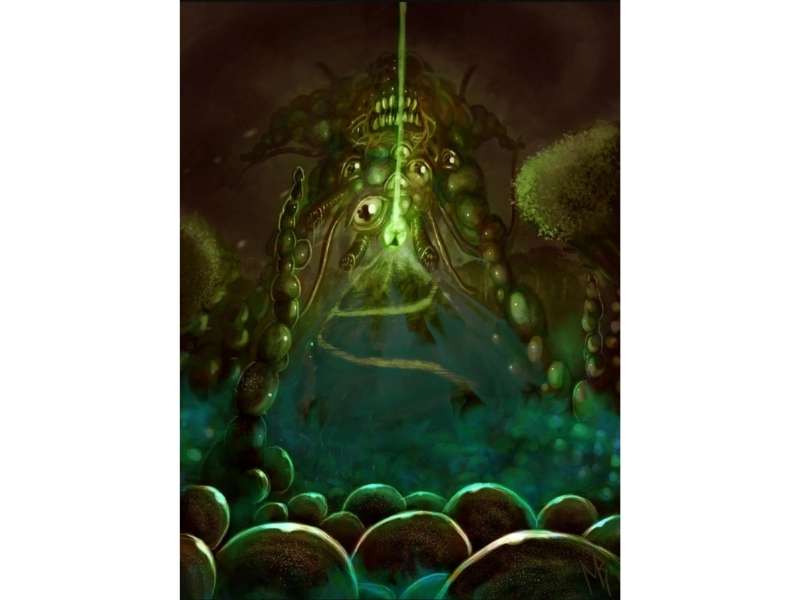
It began in the pulp works of American science fiction/weird horror writer Howard Phillips Lovecraft.
Before the storied author’s work, the horror genre was largely based on well-established European folklore. That explains the original wave of “monster” movies from the 1930s featuring vampires and werewolves. At the same time, Mary Shelley’s Frankenstein morphed from her original vision into the camp version that is now so well-established in pop culture.
By comparison, Lovecraft’s work established a mythos that involved entities that were truly “out of this world,” and again, long before the flying saucer wave of the Cold War.
The Backstory on Lovecraft and His Eternal God – Meet Yog Sothoth
The short-lived HBO series Lovecraft Country, based on the book by Matt Ruff, brought new attention to the works of H.P. Lovecraft, whose creation of what is today known as “Cthulhu Mythos.” Yet, apart from an almost ironic “cult following,” H.P. Lovecraft hasn’t quite gained the notoriety of H.G. Wells or J.R.R. Tolkien, yet his work has been as influential – with it parodied on both The Simpsons and South Park to great effect.
Yet, Lovecraft’s character Cthulhu generally receives the spotlight in modern pop culture, while Nyarlathotep also remains among the more “infamous” of Lovecraft’s creations.
By contrast, Yog-Sothoth is sometimes seen as a “secondary antagonist” despite having powers beyond imagination. The ancient one appeared in several works, beginning with a mention in the novella The Case of Charles Dexter Ward. The ancient one is truly introduced in The Dunwich Horror and later appears in At the Mountains of Madness and Through the Gates of the Silver Key.
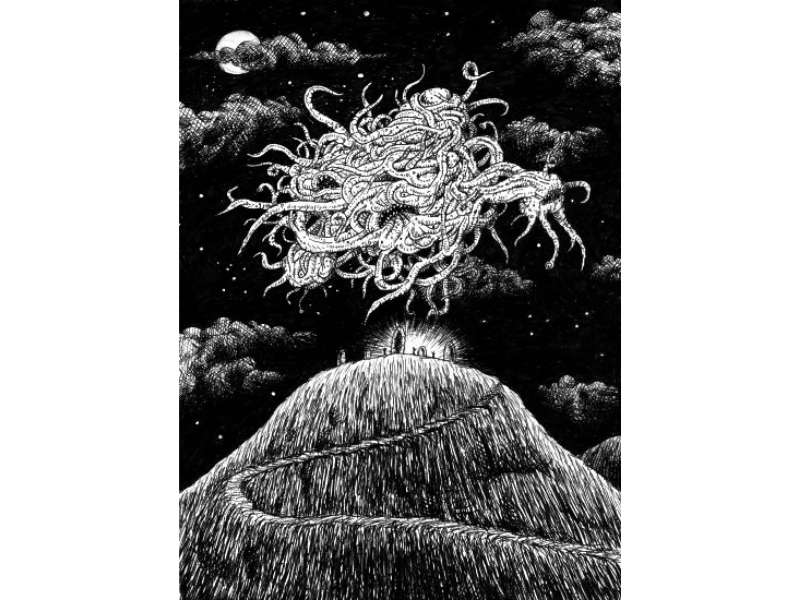
Even in that latter story, Yog Sothoth is presented almost as a benevolent creature—at least compared to the other ancient ones.
“Like all of Lovecraft’s Outer Gods, part of the point is that he makes no sense,” suggested Sean McCabe, co-host of the weekly podcast Ain’t it Scary? With Sean & Carrie.
“Yog-Sothoth is called the Key and the Gate and the All-In-One, and he seems to be coterminous with all points of time and space while also being firmly locked outside our physical dimension. It is most often depicted as an endlessly massive collection of colored spheres or bubbles, luminescent and hideously intelligent,” added McCabe. “He/it is probably best known for (*SPOILERS*) impregnating the mother of Wilbur Whateley in The Dunwich Horror, resulting in the villainous Wilbur and his invisible, barn-sized monstrous twin. Yog-Sothoth seems to be probably the second most powerful and terrifying of Lovecraft’s Outer Gods – behind Azathoth – but it’s this starring role in one of his best-known works that probably locks in the name recognition.”
Large and Truly in Charge
Described as being born of the “Nameless Mist,” the progenitor of Cthulhu and the ancestor of the Voormi, Yog Sothoth is essentially an all-knowing, all-seeing, and even all-powerful being. He can change shape, and though not explicitly “evil,” he certainly wouldn’t see humans as the least meaningful. In fact, it could be interpreted that humans are to the ancient ones like Yog Sothoth as insects are to man, while he is shown to have little tolerance for mankind beyond what their sacred role is to perform.
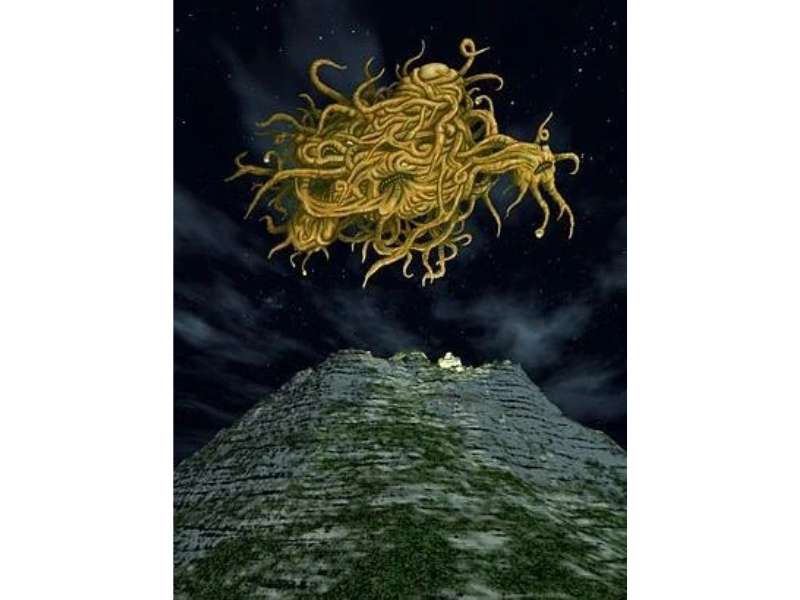
“From across the Black Seas of Infinity and beyond the mists of time, Yog-Sothoth watches and waits. For he is the guardian of the gateway between worlds, and he alone holds the key to unlock the gate. For when the ancient rites have been spoken, and the lords of darkness have been awakened and summoned forth, then shall the gateway between the stars open once more,” reads a passage from the fictional “The Necronomicon” in describing the god.
“Yog-Sothoth’s origin appeals to how humans interpret time,” explained Elizabeth Fulda of Sphinx PR, a self-professed “geek publicist” and purveyor of weird horror.
“We like linear storytelling/narratives. Something ‘appearing lacks grounding – a lift-off for the horror. Yog-Sothoth is Cthulhu’s origin story in a way,” added Fulda. “They give Cthulhu context.”
Yog Sothoth Beyond Lovecraft
Although Yog Sothoth didn’t appear in Lovecraft Country, the ancient deity was the basis for the Doctor Who villain “The Great Intelligence,” which was seen in the fifth season of the original series in the second Doctor’s six-part serial “The Abominable Snowmen” in the fall of 1967; and a year later in the sequel “The Web of Fear.” The Great Intelligence returned for the 2012 eleventh Doctor story “The Snowmen” and in the 2013 episode “The Bells of Saint John,” followed by the series seven finale “The Name of the Doctor.”
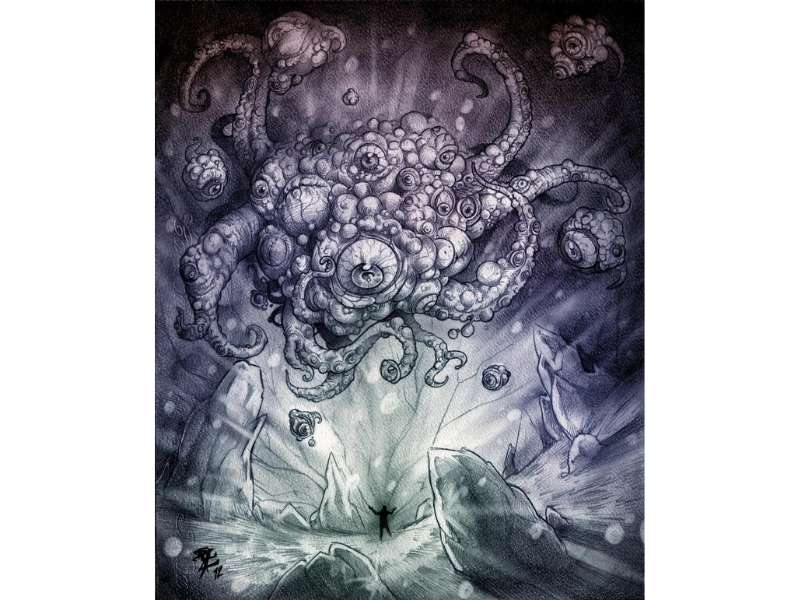
Though never specifically described as Yog Sothoth in the TV series, the Lovecraft name is used in several Doctor Who tie-in novels. Yet, it has been pointed out that while Yog Sothoth is largely indifferent when it comes to humanity, the Great Intelligence is vindictive and petty.
A Twisted Interpretation of Greek Mythology
Another take on Yog Sothoth is that he is akin to Zeus, the all-powerful king of the Greek gods.
“I think imagining them as a cosmic creepy version of the Greek Gods helps a lot because they all do different things and are related and have their own agendas and roles,” explained Kyle Cords. Kyle’s The Horror at Martin’s Beach and the Kingdom of Pavement podcast demonstrate why he is so well-regarded as a Lovecraft authority.
Cords said that while the concept of “ancient gods” had been around long before Lovecraft, most came from mythology from across the world. Lovecraft followed in the footsteps of writer Robert W. Chambers, author of The Yellow Sign and Hastur.
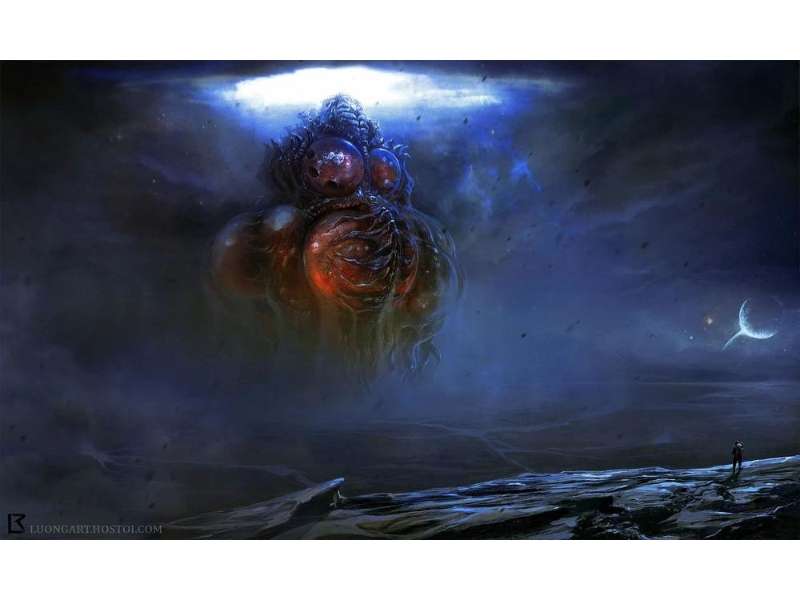
“These writers of this time were borrowing characters and inspirations from each other. And that’s a tradition that continues with the TV shows,” explained Cords. “Yog-Sothoth is the gatekeeper to the realms. It is all-knowing and a pretty good source to call upon if you want to tap into cosmic secrets and powers. You knock on the door to the universe Yog-Sothoth is the one designated to answer.”
Yog-Sothoth differed from Zeus and the traditional concept of “gods” in that he didn’t resemble man – and didn’t create mankind in his image.
“The thing with these gods that helps people use them is that they possess a quality that a lot of other deities don’t – they don’t resemble things of our world,” added Cords. “The thing that was unique about Lovecraft is he injected the fear of the unknown that he felt so prominently with his xenophobia into these creatures. They possess these non-Euclidian shapes that drive the humans mad at a mere glance at them.”
That makes the gods like Yog Sothoth so difficult to even comprehend. Timeless, all-knowing, and almost impossible to truly describe, Yog Sothoth isn’t simply watching because humans just wouldn’t be worth his endless time.
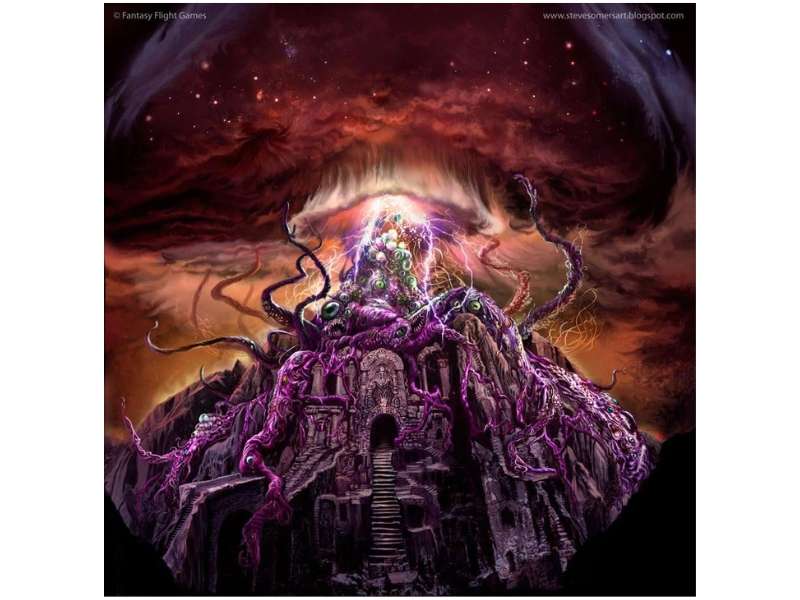
“Lovecraft’s own created mythology was partly inspired by some fantasy stories written by Lord Dunsany called The Gods of Pegana, complete with a dreaming god of creation and destruction that will spoil everyone’s party should it ever awake. So Lovecraft definitely isn’t the first to invent gods to go along with his fiction,” said McCabe. “Lovecraft really took the idea of uncaring gods and pushed it to a new and terrifying place. The ancient Greek gods were uncaring and often cruel because they were like people. Lovecraft’s gods are uncaring and cruel because they don’t even know what uncaring and cruel mean; they might not even know we exist. They’re just doing their own thing, and our world might be obliterated by it, and who cares?”
The Legacy of Yog Sothoth and Lovecraft
The great unanswered question might be what Lovecraft would have thought about our interpretation of Yog-Sothoth and the ancient ones. We’ve certainly learned more about the universe, while science fiction and weird horror have taken cues from the late author’s work.
“When modern sci-fi stories invoke ‘elder gods’ from beyond space and time, it’s hard not to draw a direct line back to H.P. Lovecraft. While not the sole focus of his horror stories, the pantheon of mind-shattering alien deities Lovecraft created is undoubtedly his legacy,” said McCabe. “Lovecraft loved other people writing stories with his characters and ideas, even during his lifetime, so I can’t imagine how happy he would be if he could see that influence a century on!”
We work pretty hard on this stuff. Do us a solid if you’re getting anything out of our writing!


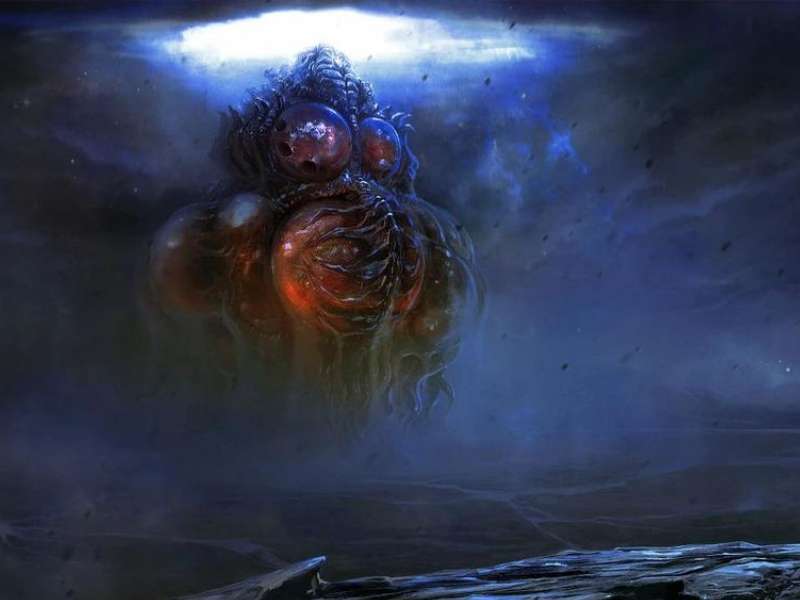






0 Comments